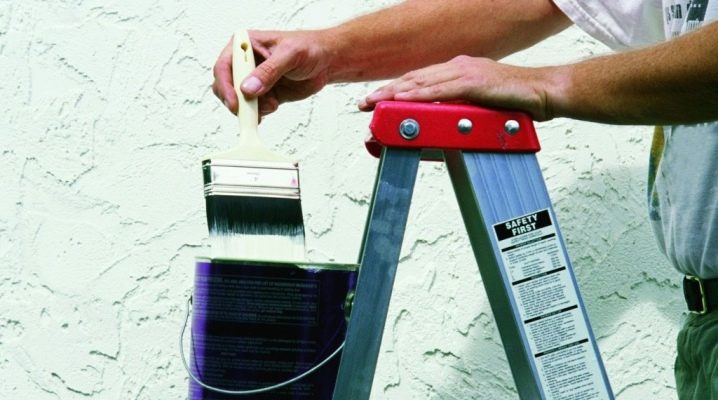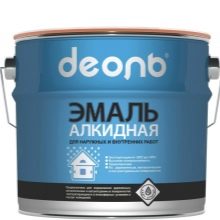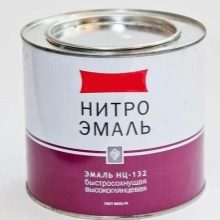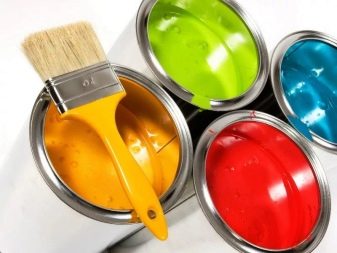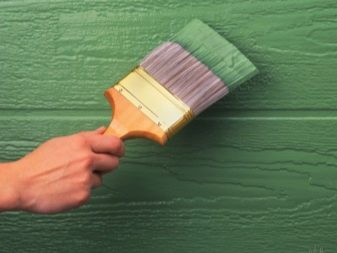What distinguishes enamel from paint: a detailed comparison of compositions
Currently, different types of paints are used to paint the walls in the room. Modern manufacturers offer buyers a fairly wide range of finishing materials, which makes it easy to choose the best option for a specific surface. Increasingly, enamel paints are used for painting walls and ceilings, which differ somewhat from standard mixtures.
Composition
To understand what is enamel and what are its differences from the usual paint, you need to familiarize yourself with the composition. Mandatory component of the base is varnish. Also included are various fillers and pigments that allow you to get the desired color. Another important component of enamel is white spirit or solvent.
Due to this composition, the substance is widely used for both internal and external works. Enamels fit well on any surface, which greatly simplifies the process of staining. This applies to wood, metal and even bricks.
Experts recommend to abandon the use of such paints in rooms with fire hazardous conditions. This is explained by the fact that the lacquer present in the enamel base is highly flammable. These mixtures have decent performance, which distinguishes them from many finishing materials.
Such compositions are characterized by good resistance to moisture, and they are not afraid of the negative effects of the environment.
Kinds
It should be noted that modern manufacturers present several types of enamels to customers. These include:
- Alkyd formulations. These finishing materials are durable and easy to work with. In addition, these compounds are often used for painting walls in rooms with high humidity.
- Polyurethane types. The main distinctive quality of these options is wear resistance.Often they are used in rooms with high traffic.
- Nitroen. The main component of these compounds is cellulose nitrate. A positive feature of such enamels is instant drying.
Each of the above types can be used in certain conditions. But before you buy enamel, you should familiarize yourself with the properties of ordinary paints.
Paint features
For a start it is worth saying that the paint has a broader concept when compared with enamel. The main component of the common species is flaxseed oil, which is boiled in the production process. Unlike enamel, paints are used exclusively to impart color to certain surfaces. Such compositions have completely different properties, which are worth reading.
The texture of ordinary paint is rather viscous. This is due to the fact that it is based on components such as oil and linseed oil. Latex and emulsion are used as additional components. In addition, the composition of the usual paint necessarily included components, which after application to the surface form a film.Quite often, a solvent is added to the base, so that the substance acquires a consistency convenient for application.
Today, there are many types of varied paints. The most popular are water dispersion. The peculiarity of these options is the presence of special aqueous dispersions, which act as binding components.
Many experts argue that such paints are an ideal choice for painting walls and ceilings, as they do not contain harmful impurities.
Also reliable silicate species are in great demand. Art and glue paints are equally popular.
Difference of compositions
To understand which option is best used for painting the surface, it is necessary to compare the enamel and the usual paint. First you need to say that the first type is used for finishing surfaces, forming a peculiar thin glass layer after application. In addition, the enamel is subjected to high temperature processing.
As for paints based on oil or water, they are used to impart color to a specific surface.Do not forget that the linseed oil is used to dissolve the pigments. If you use enamel, then a solvent is used for this purpose.
Paints have low protective properties when compared with enamels.
The main advantage of enamels over oil formulations is that they are used not only for painting rooms. Alkyd options are often used for facades. They are characterized by good stability and durability.
These or other surfaces should be given special attention after treatment with similar compounds. When applied enamel coating becomes smooth and shiny. Paint treatment gives a slightly different result. After coloring the surface differs in a dim look and dullness.
The difference between enamel paint is hardness and elasticity. The first option has a higher performance. Under the influence of weather conditions or temperature extremes, the paint can lose its original properties, which is not the case with enamel.
The difference between these finishing materials lies in the fact that enamels are used to process certain objects. Paints are necessary for large surfaces. In addition, oil or other compositions will cost a bit cheaper than enamel.
In the continuation of the topic, see the video about the differences between enamel, paint and varnish.
